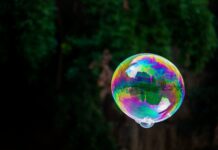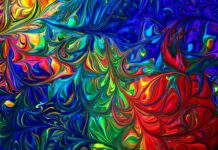Bioactive terrariums have gained immense popularity among reptile and amphibian enthusiasts in recent years. These living ecosystems aim to replicate natural environments, providing a more enriching habitat for captive animals while also minimizing maintenance for pet owners. In this guide, we will delve into the intricacies of bioactive terrariums, exploring their components, benefits, maintenance, and more.
1. Understanding the Concept
Bioactive terrariums emulate natural ecosystems by incorporating living organisms such as plants, microorganisms, and invertebrates alongside the primary inhabitant, typically a reptile or amphibian. The fundamental principle is to establish a self-sustaining ecosystem wherein waste produced by the inhabitant is broken down by microorganisms and utilized by plants, creating a balanced and healthy environment.
2. Key Components
a. Substrate
The substrate forms the foundation of the bioactive terrarium, providing stability for plants and microorganisms while facilitating nutrient cycling. Common substrate materials include coconut coir, organic topsoil, and sphagnum moss. It’s essential to choose a substrate with adequate moisture retention and drainage properties to support plant growth and maintain humidity levels.
b. Live Plants
Live plants play a crucial role in bioactive terrariums, contributing to air purification, humidity regulation, and aesthetic appeal. Selecting plant species that thrive in the terrarium’s specific conditions is vital. Epiphytic plants like bromeliads and pothos are popular choices due to their adaptability to low light and high humidity environments.
c. Microorganisms
Beneficial microorganisms, including bacteria, fungi, and springtails, are integral to the breakdown of organic matter within the terrarium. These organisms help decompose waste, preventing the accumulation of toxins and promoting nutrient recycling. Springtails, in particular, aid in maintaining a clean environment by consuming decaying organic matter and preventing mold growth.
d. Clean-up Crew
In addition to microorganisms, bioactive terrariums often incorporate a clean-up crew comprising detritivores such as isopods (sow bugs) and earthworms. These organisms assist in the decomposition process, consuming organic waste and contributing to soil aeration. A diverse clean-up crew enhances nutrient cycling and reduces the need for manual cleaning.
e. Lighting and Heating
Proper lighting and heating are essential for creating a suitable environment for both plants and animals within the terrarium. Full-spectrum UVB lighting is necessary for reptiles to synthesize vitamin D3, crucial for calcium metabolism. Additionally, maintaining appropriate temperature gradients enables reptiles to regulate their body temperature effectively, promoting thermoregulation and overall health.
f. Habitat Enrichments
Enriching the terrarium with naturalistic features such as branches, rocks, and hiding spots enhances the inhabitant’s behavioral repertoire and mimics their natural habitat. These elements provide opportunities for climbing, basking, and seeking shelter, promoting physical and mental stimulation.
3. Benefits of Bioactive Terrariums
a. Enhanced Environmental Enrichment
Bioactive terrariums offer a dynamic and stimulating environment for captive animals, encouraging natural behaviors such as foraging, exploration, and thermoregulation. The presence of live plants, substrate microorganisms, and clean-up crews enriches the habitat, promoting physical and mental well-being.
b. Reduced Maintenance
Compared to traditional setups, bioactive terrariums require less frequent cleaning and substrate replacement due to the self-regulating nature of the ecosystem. The presence of microorganisms and detritivores helps break down waste materials, minimizing the accumulation of toxins and odors.
c. Improved Air Quality
Live plants contribute to air purification by absorbing carbon dioxide and releasing oxygen through photosynthesis. This process helps maintain oxygen levels and regulate humidity within the terrarium, creating a healthier environment for both plants and animals.
d. Naturalistic Aesthetics
Bioactive terrariums boast lush greenery, vibrant flora, and dynamic ecosystems that closely resemble natural habitats. The interplay of live plants, substrate microorganisms, and clean-up crews creates a visually appealing and biologically diverse enclosure, enhancing the overall aesthetics of the habitat.
4. Setting Up a Bioactive Terrarium
a. Choose Appropriate Enclosure Size
Select an enclosure size that accommodates the specific needs of the inhabitant while allowing ample space for plants, substrate, and habitat enrichments. Consider the adult size and activity level of the reptile or amphibian species when determining the enclosure dimensions.
b. Install Proper Lighting and Heating
Install appropriate lighting fixtures to provide adequate illumination and UVB exposure for plant growth and reptile health. Additionally, incorporate heating elements such as heat lamps or heating mats to create temperature gradients essential for thermoregulation.
c. Layer Substrate Correctly
Layer the substrate according to the terrarium’s specific requirements, ensuring proper drainage and moisture retention. Begin with a drainage layer of gravel or clay balls followed by a barrier mesh to prevent substrate mixing. Add a substrate mixture consisting of organic soil, coco coir, and sphagnum moss to provide a suitable medium for plant growth and microbial activity.
d. Introduce Live Plants
Carefully select and place live plants within the terrarium, considering factors such as light requirements, humidity tolerance, and growth habits. Arrange plants strategically to create naturalistic landscapes and provide hiding spots for the inhabitant. Regularly monitor plant health and growth to ensure optimal conditions.
e. Add Microorganisms and Clean-up Crew
Inoculate the terrarium with beneficial microorganisms such as springtails and soil bacteria to kickstart the decomposition process. Introduce a diverse clean-up crew comprising isopods and earthworms to assist in waste breakdown and nutrient recycling. Monitor population dynamics and adjust as necessary to maintain a balanced ecosystem.
f. Monitor Environmental Parameters
Regularly monitor temperature, humidity, and lighting levels within the terrarium to ensure optimal conditions for plant growth and animal health. Use digital thermometers, hygrometers, and light meters to track environmental parameters and make adjustments as needed.
5. Maintenance and Care
a. Spot Cleaning
Perform regular spot cleaning to remove visible waste materials and debris from the terrarium’s substrate and surfaces. Use a small scoop or tweezers to target specific areas without disturbing the entire ecosystem.
b. Prune and Trim Plants
Monitor plant growth and trim or prune as needed to prevent overcrowding and maintain desired aesthetics. Remove dead or wilted foliage to promote healthy growth and prevent the accumulation of decaying organic matter.
c. Supplemental Feeding
While the clean-up crew helps maintain a balanced ecosystem, supplemental feeding may be necessary for certain species. Provide occasional prey items or commercial diets appropriate for the inhabitant’s dietary requirements to ensure adequate nutrition.
d. Monitor Population Dynamics
Regularly assess the population dynamics of microorganisms and clean-up crews within the terrarium. Adjust population levels as needed to prevent overpopulation or depletion of resources, ensuring a balanced and sustainable ecosystem.
e. Maintain Environmental Parameters
Continuously monitor and adjust environmental parameters such as temperature, humidity, and lighting to meet the needs of both plants and animals. Provide proper ventilation to prevent stagnant air and minimize the risk of mold or fungal growth.
6. Common Challenges and Solutions
a. Pest Infestations
Occasional pest infestations, such as mites or fungus gnats, may occur within bioactive terrariums. Implement proactive measures such as improving ventilation, reducing excess moisture, and introducing natural predators to control pest populations.
b. Plant Health Issues
Monitor plants for signs of stress, disease, or nutrient deficiencies, such as yellowing leaves or stunted growth. Address issues promptly by adjusting environmental conditions, supplementing with appropriate nutrients, or replacing affected plants as necessary.
c. Odor Control
While bioactive terrariums are designed to minimize odors through waste decomposition, occasional odor issues may arise. Address underlying causes such as overfeeding or inadequate ventilation, and perform thorough substrate maintenance to prevent odor buildup.
7. Conclusion
Bioactive terrariums offer a holistic approach to reptile and amphibian husbandry, providing enriching habitats that promote natural behaviors and minimize maintenance. By mimicking natural ecosystems, these living enclosures create dynamic and visually appealing environments while fostering the well-being of captive animals. With proper setup, maintenance, and care, bioactive terrariums can be sustainable ecosystems that benefit both hobbyists and their scaled or amphibious companions.
8. Safety Considerations
a. Avoid Toxic Plants
When selecting live plants for the terrarium, research and avoid species known to be toxic to reptiles or amphibians. Toxic plants can pose serious health risks if ingested by the inhabitant, leading to illness or even death. Opt for non-toxic varieties and monitor plant consumption to prevent accidental ingestion.
b. Use Safe Substrate Materials
Choose substrate materials that are safe and non-toxic for the inhabitant. Avoid substrates containing chemicals, pesticides, or fertilizers that could harm the animal or disrupt the ecosystem balance. Natural and organic substrate options are preferable for bioactive terrariums.
c. Monitor Temperature and Humidity
Ensure that temperature and humidity levels within the terrarium remain within safe ranges for the inhabitant’s species. Extreme temperatures or humidity fluctuations can stress or harm the animal, compromising its health and well-being. Use reliable monitoring equipment and provide appropriate heating and humidity sources as needed.
9. Customization and Personalization
a. Tailor to Species Requirements
Customize the bioactive terrarium to meet the specific needs and preferences of the inhabitant’s species. Research the natural habitat, behaviors, and environmental requirements of the animal to create an optimal living space. Adjust lighting, heating, substrate composition, and plant selection accordingly to replicate the natural habitat as closely as possible.
b. Creative Design Elements
Incorporate creative design elements and aesthetic features to personalize the terrarium and enhance its visual appeal. Experiment with different layouts, decorations, and landscaping techniques to create unique and engaging environments for both the inhabitant and the observer.
10. Educational and Therapeutic Benefits
a. Educational Opportunities
Bioactive terrariums provide valuable educational opportunities for enthusiasts of all ages. Observing natural behaviors, ecological interactions, and plant growth cycles firsthand fosters a deeper understanding and appreciation for ecosystems and biodiversity. Bioactive setups can serve as educational tools in classrooms, nature centers, and public exhibits.
b. Therapeutic Value
Interacting with bioactive terrariums can have therapeutic benefits for both caregivers and animals alike. The calming effect of observing nature, caring for living organisms, and cultivating a living ecosystem can reduce stress, anxiety, and promote overall well-being. Bioactive setups offer a therapeutic outlet for individuals seeking relaxation and connection with nature.
Conclusion
Bioactive terrariums represent a harmonious integration of ecology and animal husbandry, offering a sustainable and enriching habitat for reptiles and amphibians. By mimicking natural ecosystems, these living enclosures provide numerous benefits, including enhanced environmental enrichment, reduced maintenance, and improved animal welfare. With careful planning, proper setup, and ongoing maintenance, bioactive terrariums can be both functional ecosystems and captivating works of living art, enriching the lives of both inhabitants and caretakers alike.


















